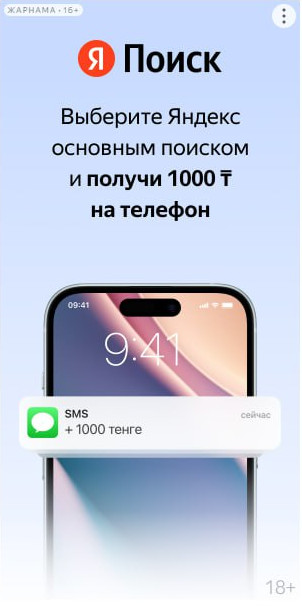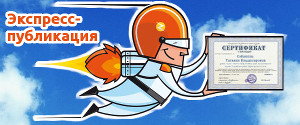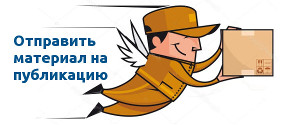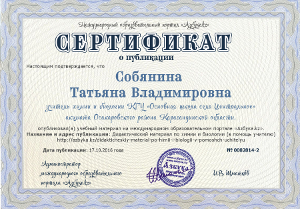Альтернативный метод для переработки пластиковых отходов в НИШ Актобе
|
Токмурзина Аида Мухтаровна ученица выпускного класса, Назарбаев Интеллектуальная школа физико-математического направления, города Актобе, Актюбинская область, Казахстан |
Alternative method for plastic recycling
Tokmurzina Aida, student of Nazarbayev Intellectual school of physics and mathematics, Aktobe, Kazakhstan.
Abstract
Currently, the use of plastic materials finds every possible application in the spheres of human life, however, plastic components have a long decomposition period, which is the main issue of its processing. The following research paper about the efficient way of plastic recycle had several different methods. The most important finding showed that the most effective and cheapest method to decrease the amount of polyethene at NIS Aktobe is the use of «Achroia Grisella».
Keywords: ecology, plastic, polyethene, wastes, recycle.
Абстракт
В настоящее время использование пластическовых материалов находит всевозможное применение, однако пластмасса имеет длительный период разложения, что и является главной проблемой его переработки. Представленная исследовательская работа о наиболее эффективном способе переработки в школьных условиях пластика включает в себя различные методы: обзор литературы, анализ и социальный опрос. Основным выводом работы является то, что наиболее эффективным и дешевым методом снижения количества полиэтилена в НИШ Актобе является использование «Achroia Grisella».
Ключевые слова: экология, пластик, полиэтилен, отходы, переработка.
Абстракт
Қазіргі уақытта пластикалық материалдардың қолдануы адам өмірінің барлық салаларында кездеседі, бірақ пластикалық компоненттер ұзақ уақыттың ішінде ыдырау кезеңіне ие, бұл оның өңдеуінің басты мәселесі болып табылады. Пластикалық қайта өңдеудің тиімді жол туралы табу үшін бірнеше әдістер қарастырлыған. Ең маңызды нәтиже көрсеткендей, Ақтөбе НЗМ-де полиэтилен мөлшерін азайтудың ең тиімді және арзан әдісі «Achroia Grisella» қолдану болып табылады.
Түйінді сөздер: экология, пластик, полиэтилен, қалдықтар, өңдеу.
Introduction
Billions of fauna representatives are killed by plastic pollution (Parker, 2019). Moreover, the decomposition process under the influence of solar radiation, plastic emits greenhouse gas impurities of methane and ethylene (Mckenna, 2019). Proposed modern methods of recycling plastic waste require special equipment, thus they are economically unprofitable in the developing countries.
The research purpose of a scientific paper:
To find the advantages and barriers of introduction the best method of plastic processing in the local area — NIS Aktobe.
One of the most environmentally friendly methods of reducing the amount of plastic waste is to replace primal matter for the production of polymers to biodegradable, for example, use starch as a substrate for the manufacture or others that could be exposed to oxidative degradation (Woodford, 2019). Nevertheless, the main disadvantage of this method is expensive primary materials (Lackner, 2015). As practice shows, biodegradable materials to accelerate the decomposition processes also require to create conditions like high temperature. To reduce the annual production of plastic, it is possible to reuse it and give a «second life». This method is cheaper than first because it does not require modern expensive machines and robotic devices. However, with the implementation of secondary plastic on the market, it will require compliance with modern quality standards. For instance, most recycled plastics are not widely used in light industry because consumers are afraid of the danger of food contamination.
Another innovative plastic recycling solution is the use of insects. For instance, wax wormers larvae contain a group of enzymes responsible for processing plastic in their digestive system. A study by Federica Bertocchini confirms this statement (Alizar, 2017). This method is cheap from an economic point of view, as wax moth larvae are natural pests of hives and their cost is low. Moreover, their maintenance does not require special equipment. However, their use may not be ethical. This method is the most eco-friendly, cheap and effective to implement in school. Therefore, in this project the main research questions are:
1. What are the obstacles to introducing plastic recycling by wax wormers in school?
2. What are the benefits of using wax wormers larvae?
3. How aware is the school community of plastic recycling method?
With the third question, it will be possible to reveal external problems connected consumer lifestyle and lack of awareness of plastic recycling issues among the school community.
The novelty of the proposed scientific work is that it considers the implementation of a method for processing plastic with wax wormers larvae «Achroia grisella» into everyday life that had not been practised before.
Methods:
Following research paper about the efficient way of plastic recycle had several different methods. Information and data collected by both primary and secondary sources supplemented each other so that the level of inaccuracy and possible bias declined. Background information was included to get general data about the topic and was prepared first. Plastic recycling is one of the most relevant global issues, therefore there was too much information available. To avoid these problems, all the background information was taken from globally recognized and credible sites. However, there were a lot of useful sources which were checked by RAVEN, the criteria for identifying the credibility of sources.
To identify the obstacles, find the advantages and barriers of introduction the method of plastic processing by wax wormers «Achroia Grisella» in Nazarbayev Intellectual School of physics and mathematics in Aktobe (NIS) wide public opinion is required. To get it is necessary to find out both qualitative and quantitative data, thus it needs to reach the largest number of survey participants among the school community as possible. Therefore, here is a couple of reasons for not conducting the interview:
- The interview will only cover the opinions of several people.
- The more the number of people surveyed, the clearer and more correct is the picture of consumer lifestyle.
However, the survey was designed to gather reliable opinions of NIS school community. The survey was taken from 100 people. There 65 students, also 15 parents, 11 teachers, 7 curators and 2 school workers. Each survey approximately lasted for 1-3 minutes and it contains single and multiple choices answers, to get data and complete the statistics.
Using secondary sources, a list of questions to conduct a survey was created, because in this way it could make research more profound. Overall, it was 12 questions, the 1-2 were to find out the type of activity and the age of the respondents. The Survey was conducted on a familiar Google Forms platform, therefore the participant felt relaxed and answered all questions without difficulty.
Results
Internet research was very essential as all the data found was relevant. Considering all the obstacles of introducing plastic recycling by wax wormers in school it is identified that there are quite enough. The results of the survey were even more very useful. The main findings from it can be summarized as:
The information form Question 1 illustrates the function in the school community of the survey participants (appendix #1).
The data from Question 3 showed that the main reason for using plastic among above half of school community representatives is its habitually. 1/3 of survey participants prefer to use plastic household items since it is relatively light in weight (figure 1).

fig.1
22 respondents said that the main advantage of implementation alternative method of polyethene processing that it is no require special techniques and equipment (figure 2).

fig.2
Overall, the analysis of the survey showed that participants generally have a correct representation of the environmental dangers of plastic. However, knowledge of plastic recycling methods varied by age, so people under 20 knew best about them.
Discussion
According to each of the research questions, it is possible to make the following conclusions.
- What are the obstacles to introducing plastic recycling by wax wormers in school?
There are some reasons why the implementation of the method of plastic processing by wax wormers «Achroia Grisella» in NIS Aktobe may be difficult. Firstly, it can be low school community support. Secondly, breeding wax wormers larvae will require a warm and humid place.
- What are the benefits of using wax wormers larvae?
Advantages of implementing alternative plastic recycle method are enough. Firstly, it will do not require special techniques, such as introducing water and electricity. Second thing is that wax wormers have relatively high plastic processing speed. Moreover, the price of insect content would be relatively low compared to industrial methods.
- How aware is the school community of plastic recycling method?
Approximately only 36% of the survey participants familiar with the method of plastic processing by wax wormers «Achroia Grisella». This indicates that it is necessary to disseminate information about this method among the school community.
The following conclusion from the main research question «What is the most efficient solution to reduce plastic wastes in NIS Aktobe?
Proposed modern methods of recycling plastic waste require special equipment and it is economically unprofitable in the developing countries, also the final product is microplastic or granules.
The best method for recycling plastic waste in Nazarbayev Intellectual School of physics and mathematics in Aktobe is processing with wax wormers larvae «Achroia Grisella». The alternative way will help to improve the ecological condition of our city on the example of the local point like a school through the processing of one of the most common types of human waste — plastic, the least expensive and in the most environmentally friendly and efficient way.
In the future, it is planned to introduce this method of plastic processing into the daily lives of students of the NIS Aktobe, to improve the region’s ecology and maintain a careful attitude to nature.
Acknowledgements
I thank the community of the Nazarbayev Intellectual School of physics and mathematics in Aktobe. Teachers, curators, students and their parents who participated in the survey.
References:
Alizar, A. (2017). The Spanish amateur beekeeper accidentally discovered that the larvae of a large wax moth devour plastic [Ispanskaya pchelovod lyubitel’ sluchayno obnaruzhila, chto lichinki bol’shoy voskovoy moli pozhirayut plastik]. Habr. Retrieved from: httpsss://habr.com/ru/post/403419/
Lackner, M. (2015). Bioplastics — Biobased plastics as renewable
and/or biodegradable alternatives to petroplastics. ResearchGate. Retrieved from: httpsss://www.researchgate.net/figure/Pros-and-Cons-of-Petrobased-and-Biobased- Plastics_tbl4_276060634
Mckenna, P. (2019). 4 Ways to Cut Plastic’s Growing Greenhouse Gas Emissions. Inside Climate news. Retrieved from:
httpsss://insideclimatenews.org/news/15042019/plastic-greenhouse-gas-emissions-renewable-energy-waste-recycling-fossil-fuel-production-climate-change
Parker, L. (2019). The world’s plastic pollution crisis explained. National Geographic. Retrieved from: httpsss://www.nationalgeographic.com/environment/habitats/plastic-pollution/
Salkova, N. (2019). The only one waste sorting plant in Aktobe on the verge of bankruptcy [edinstvennyy_musorosortirovochnyy zavod v aktobe na grani bankrotstva]. Kursiv. Retrieved from: httpsss://kursiv.kz/news/vlast-i-biznes/2019-01/edinstvennyy_musorosortirovochnyy-zavod-v-aktobe-na-grani-bankrotstva
Woodford, C. (2019). Bioplastics and biodegradable plastics. Explain that Stuff!. Retrieved from: httpsss://www.explainthatstuff.com/bioplastics.html
Appendices
1.

- 6826 просмотров









